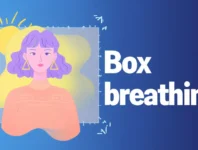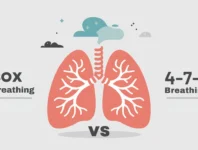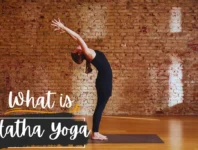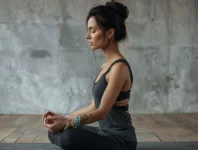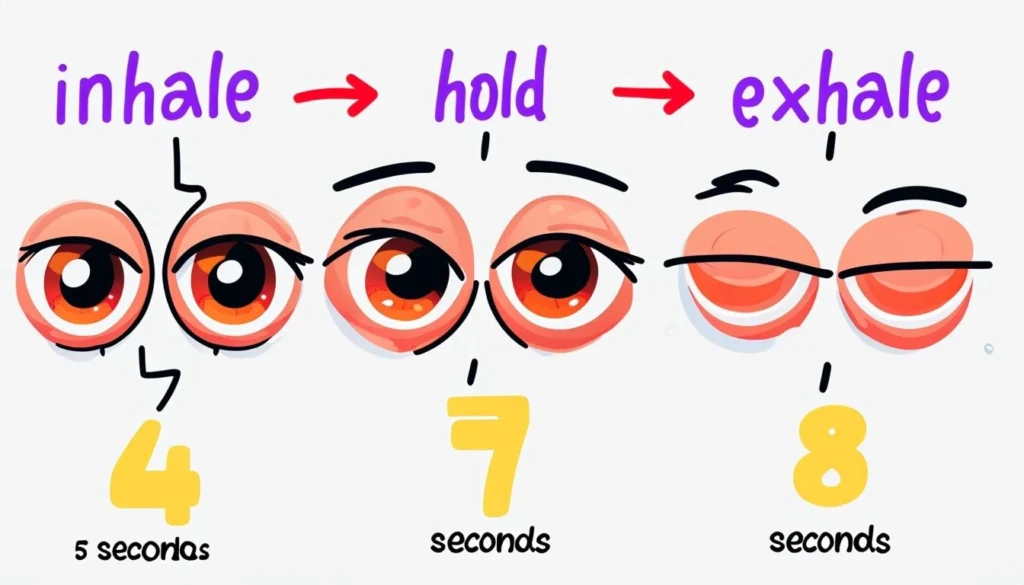
Introduction
In today’s fast-paced world, anxiety has become a daily struggle for many. Whether it’s due to work pressures, personal challenges, or constant digital distractions, the need for effective relaxation techniques has never been greater. One such method gaining popularity is the 4-7-8 breathing technique – a simple yet powerful exercise that can help you find calm amidst the chaos. Let’s dive into what 4-7-8 breathing is, how it works, and why it’s celebrated as a tool for managing anxiety.
Understanding 4-7-8 Breathing
The 4-7-8 breathing technique, also known as the “relaxing breath,” is a simple yet structured exercise. Created by Dr. Andrew Weil, a prominent figure in integrative medicine, this method is designed to promote relaxation and reduce stress. The steps are straightforward:
- Inhale through your nose for a count of 4.
- Hold your breath for a count of 7.
- Exhale slowly through your mouth for a count of 8.
- Repeat the cycle 4-8 times, or until you feel calmer.
This controlled breathing pattern regulates your nervous system, fosters mindfulness, and serves as an accessible tool for anxiety relief.
How to Practice 4-7-8 Breathing
Here’s a simple step-by-step guide to get started:
- Find a Comfortable Position: Sit or lie down in a quiet, comfortable space.
- Prepare Your Breathing: Place the tip of your tongue against the roof of your mouth, just behind your front teeth.
- Inhale: Breathe in deeply through your nose for 4 seconds, focusing on the sensation of air filling your lungs.
- Hold: Hold your breath gently for 7 seconds, allowing your body to absorb the oxygen.
- Exhale: Slowly exhale through your mouth for 8 seconds, making a soft “whooshing” sound.
- Repeat: Perform this cycle 4 to 8 times, or until you feel relaxed.
Why 4-7-8 Breathing Works
The effectiveness of 4-7-8 breathing lies in its impact on the autonomic nervous system, which controls your body’s stress response. Here’s how it works:
- Activates the Parasympathetic Nervous System: This technique shifts your body from the “fight-or-flight” state to the “rest-and-digest” mode, reducing anxiety and stress.
- Regulates Oxygen Levels: Controlled breathing slows your heart rate, improves oxygen exchange, and lowers cortisol (the stress hormone).
- Promotes Mindfulness: The counting and focus on your breath help ground you in the present moment, disrupting anxious thought patterns.
Benefits of 4-7-8 Breathing
1. Quick Stress Relief
The 4-7-8 technique offers quick relief during moments of acute stress or panic, calming your racing heart and mind.
2. Better Sleep Quality
Practicing this technique before bedtime can quiet your mind, helping you fall asleep faster and enjoy deeper rest.
3. Improved Focus and Clarity
A few cycles of 4-7-8 breathing can boost your mental clarity and enhance your ability to tackle tasks effectively.
4. Enhanced Emotional Resilience
With regular practice, you’ll find yourself better equipped to handle life’s challenges with calm and composure.
Scientific Backing for 4-7-8 Breathing
While specific research on 4-7-8 breathing is limited, its components are supported by science:
- Breath Retention: Holding your breath stimulates the vagus nerve, which helps regulate stress responses.
- Slow Exhalation: Longer exhalations are proven to lower heart rate and blood pressure.
- Mindful Breathing: Studies show that focusing on your breath can reduce symptoms of anxiety and depression.
A 2017 study in Frontiers in Psychology found that controlled breathing techniques significantly reduce cortisol levels and enhance emotional regulation, making them effective tools for managing anxiety.
Comparing 4-7-8 Breathing to Other Techniques
| Technique | How It Works | Best For |
|---|---|---|
| 4-7-8 Breathing | Slows the heart rate and calms the mind. | Anxiety, insomnia, and immediate stress relief. |
| Box Breathing | Involves equal counts for inhale, hold, and exhale. | Building focus and managing acute stress. |
| Diaphragmatic Breathing | Focuses on deep belly breaths. | Chronic stress and improving lung capacity. |
While all methods are beneficial, 4-7-8 breathing stands out for its simplicity and effectiveness in addressing anxiety and sleep issues.
Step-by-Step Routine to Maximize Benefits
- Morning Reset: Start your day with 2-3 minutes of 4-7-8 breathing to set a calm tone.
- Midday Reboot: During lunch breaks, practice for 1-2 cycles to refresh your mind and reduce midday stress.
- Evening Wind-Down: Use 4-7-8 breathing as part of your bedtime routine to transition into restful sleep.
Common Challenges and How to Overcome Them
1. Lightheadedness
Beginners may feel lightheaded. If this happens, shorten the breath-holding duration and increase it gradually over time.
2. Consistency
Struggling to stay consistent? Set reminders or use apps like Calm for guided sessions.
3. Distractions
Create a dedicated space for your practice. Enhance the ambiance with a Himalayan salt lamp for a calming glow.
Is 4-7-8 Breathing Right for You?
The beauty of 4-7-8 breathing lies in its simplicity and accessibility. It’s safe for most people and requires no special equipment. However, those with respiratory conditions or medical concerns should consult a doctor before practicing.
Enhance Your Practice with These Tools
- Comfortable Seating: A supportive meditation cushion like the Zafu Meditation Cushion can make your practice more enjoyable.
- Mindful Atmosphere: Create a serene environment with a Himalayan Salt Lamp to promote relaxation.
- Guided Sessions: Explore the Meditation for Beginners Book for more breathing exercises and mindfulness tips.
Final Thoughts
4-7-8 breathing is a simple yet powerful technique for managing anxiety and improving overall well-being. With its ability to calm the mind, enhance sleep, and reduce stress, it’s a valuable addition to any self-care routine. Start small, stay consistent, and pair it with supportive tools to maximize its benefits.
